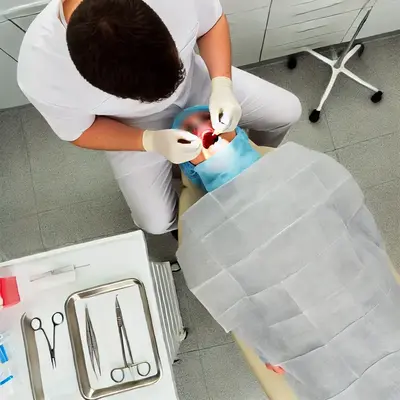Sophia, a 32-year-old woman, had been experiencing discomfort and difficulty moving her upper lip for years. Every time she smiled or spoke, she felt a strange tension in her upper lip, and the space between her teeth started widening. After a visit to her dentist, she was told that her condition was due to a tight upper lip frenulum, which would need a frenectomy—a minor surgical procedure to remove or loosen the frenulum.
What is a Frenectomy?
A frenectomy is a surgical procedure where the frenulum, a small fold of tissue, is cut or modified to improve mobility and reduce tension. The lip frenulum, in particular, connects the upper lip to the gums. Sometimes, this frenulum is too tight or thick, limiting the movement of the lip, causing discomfort, speech problems, or even gaps between the teeth (a condition known as diastema).
This condition can affect people of all ages, but the procedure is most commonly performed on young children or individuals experiencing dental or speech issues.
Symptom Breakdown:
People with a tight or abnormal frenulum often experience the following symptoms:
- Limited Lip Movement: Difficulty moving the upper lip freely.
- Gaps Between Teeth: A thick frenulum can pull the gums apart, leading to gaps, particularly between the upper front teeth.
- Discomfort or Pain: Tension or discomfort in the lip and gums.
- Speech Impairments: Difficulty pronouncing certain sounds due to restricted lip movement.
These symptoms may prompt a visit to a dentist or oral surgeon, where a frenectomy may be recommended.
Diagnostic Path: Why Might a Frenectomy Be Necessary?
A frenectomy might be suggested by a healthcare professional in the following situations:
- Orthodontic Issues: If a tight frenulum is contributing to a gap between the front teeth (diastema), especially in children, a frenectomy can be performed to correct the issue. This is often followed by orthodontic treatment to close the gap.
- Speech Problems: When a restrictive frenulum impacts speech, causing difficulty with sounds like “p,” “b,” or “m,” a frenectomy can improve articulation and lip mobility.
- Oral Discomfort: In cases where the frenulum causes tension or discomfort, especially during activities like eating, talking, or brushing, surgery can relieve the pain and improve quality of life.
- Gum Recession: In some cases, a tight frenulum pulls on the gums, leading to gum recession, which could potentially expose the roots of the teeth.
Deep Dive: Frenectomy Procedure
The frenectomy procedure is relatively simple and is usually done in a dental office. There are different approaches to performing the procedure, but the most common methods include:
- Traditional Surgical Method: The frenulum is carefully cut using surgical tools, and stitches are applied to aid healing.
- Laser Frenectomy: A laser is used to cut the frenulum, reducing bleeding and discomfort. Laser surgery is often preferred due to its precision and faster healing time.
The procedure itself typically takes 10-20 minutes, and the recovery is quick, with minimal downtime.
Table 1: Frenectomy – Traditional vs. Laser Method
| Method | Advantages | Disadvantages |
|---|---|---|
| Traditional Surgery | – Simple procedure – Widely available | – Slightly longer healing time – Requires stitches |
| Laser Frenectomy | – Faster healing – Less bleeding – No stitches needed | – May be more expensive – Not always available in all clinics |
Treatment Comparison: How to Decide on a Frenectomy
While the procedure is minor, deciding whether or not to undergo a frenectomy depends on the severity of the symptoms and the impact on your daily life. Here’s a comparison of when a frenectomy may be necessary:
- Mild Cases:
- Treatment: Conservative management or observation, especially in infants or children, as the frenulum may naturally loosen with growth.
- Recommendation: Monitor symptoms over time and consult a dentist regularly.
- Moderate to Severe Cases:
- Treatment: Frenectomy is recommended, especially if there are significant issues with speech, orthodontics, or oral discomfort.
- Recommendation: The procedure is quick and typically offers long-term benefits with minimal risk.
Outcome Story: A Successful Frenectomy
Let’s take the case of Leo, a 7-year-old boy who had difficulty pronouncing certain words. His parents noticed that his upper front teeth were starting to shift apart as well. After consulting with a dentist, it was recommended that Leo undergo a laser frenectomy. The procedure was done in 15 minutes, and after a few days of recovery, his speech improved, and his teeth began aligning properly with orthodontic treatment.
Understanding the Benefits of a Frenectomy
A frenectomy is a simple and effective solution for individuals dealing with tight frenula that limit lip movement, cause dental issues, or impact speech. Whether it’s performed traditionally or with a laser, the procedure offers long-term relief and improved oral function. If you or your child are experiencing symptoms related to the frenulum, consulting with a dentist can help determine if a frenectomy is the right solution.






